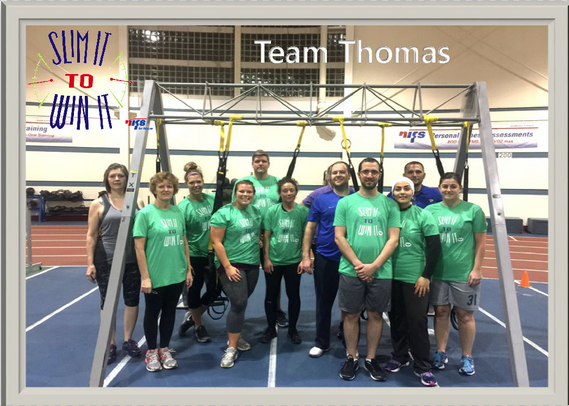 It’s that time of year when millions of people around the world start looking for that next “best” thing to give them the body they have always dreamed of. Aggressive physical challenges, cleanses, elaborate diets that usually involve the removal of a food source (and result in you craving it even more); people will take some drastic steps to help erase the past year of poor nutrition and lifestyle decisions.
It’s that time of year when millions of people around the world start looking for that next “best” thing to give them the body they have always dreamed of. Aggressive physical challenges, cleanses, elaborate diets that usually involve the removal of a food source (and result in you craving it even more); people will take some drastic steps to help erase the past year of poor nutrition and lifestyle decisions.
Unfortunately, the successes of these different “new year, new you” initiatives are short-lived, and many people will be looking again for another fix a year from now. Why is this so? I can list many reasons why weight-loss challenges don’t work and do not provide long-term, sustainable results. In a previous post I explained why mindset is crucial to fitness success, so it truly starts there. But what are some other reasons why New Year challenges don’t deliver? Most are…
- Too much
- Too fast
- Too easy to quit
Many contests or challenges demand that you take too much out of your diet or exercise way too much. They also usually want to see these changes made and results achieved too fast. Lastly, many fail to provide ample accountability, encouragement, and motivation, making it too easy to quit. So does this mean that all contests, challenges, or programs are doomed to fail? Not if they are done right!
Slim It to Win It is one of NIFS’ longest-running programs, and has been helping so many people for just shy of a decade. We here at NIFS are super proud of the life-changing results that SITWI has been able to provide hundreds of individuals here in the Indianapolis area. So how do we do it?
Not Too Much
NIFS coaches focus on small behavioral changes piled onto one another during an 8–10-week period. We don’t want anyone changing too much too fast; that is proven to be an unsuccessful practice. Focusing on one or maybe two changes at a time is a proven method that we teach our teams. Slow and steady wins the race, and we want to provide our people with the tools to continue building a healthy lifestyle long after they have completed the program.
Too much exercise, especially from the get-go (and with those who might have been less than active leading up to the program), is another mistake our coaches do not make. With two training sessions a week to start, with supplemental workouts provided, our teams get the right dose of exercise at the right time.
Not Too Fast
Once again we focus on sustainable changes and results over the course of eight weeks and beyond. The journey is not over on March 11; it’s really just beginning. NIFS coaches work toward the individual’s specific goals over many weeks—not pushing to see drastic changes in a very short amount of time. It’s just not safe, and it just doesn’t last!
When the focus is more on speed, retention of critical lifestyle practices and education will suffer, leading to the “cramming effect.” Do you remember cramming for that chemistry exam in high school? If you are anything like me and most people, you probably didn’t retain a great deal of that information. We want our team members to keep the life-changing information so they can continue to use these best practices to maintain their success.
 Not Too Easy to Quit
Not Too Easy to Quit
Positive accountability truly is a key ingredient in a successful lifestyle-change process. A strong support group will provide the needed accountability and motivation to keep at it, even when you want to hang it up and return to old behaviors that got you in the situation you are in. During SITWI, you have a whole team cheering you on and providing support, because everybody is going through a similar battle.
A group of motivated, like-minded individuals can be unstoppable in the pursuit of its goals. Not only will you be relying on your team to pick you up at times, they are going to need you right back. And speaking from experience, there is no better feeling than when you make a difference in someone’s life, or help them see their true capabilities. You can be that to someone!
The idea of a New Year, starting over, or making some improvements can be very exciting. This excitement can lead to creating real change or a repeat of the past, keeping you in the cycle of thinking it will be better next year. Remember, mindset matters most, but a strong call to make changes followed by taking action to create that change are the next best steps. Let Slim It to Win It help you take action.
This blog was written by Tony Maloney, ACSM Certified Exercise Physiologist and Fitness Center Manager. To find out more about the NIFS bloggers, click here.



